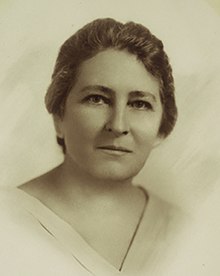
Huntington is a city in Cabell and Wayne counties in the U.S. state of West Virginia. It is the county seat of Cabell County, and the largest city in the Huntington–Ashland metropolitan area, sometimes referred to as the Tri-State Area. A historic and bustling city of commerce and heavy industry, Huntington has benefited from its location on the Ohio River at the mouth of the Guyandotte River. It is home to the Port of Huntington Tri-State, the second-busiest inland port in the United States. As of the 2020 census, its metro area is the largest in West Virginia, spanning seven counties across three states and having a population of 359,862. Huntington is the second-largest city in West Virginia, with a population of 46,842 at the 2020 census. Both the city and metropolitan area declined in population from the 2010 census, a trend that has been ongoing for six decades as Huntington has lost over 40,000 residents in that time frame.
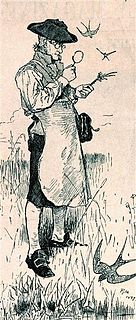
John Bartram was an American botanist, horticulturist, and explorer, based in Philadelphia, Pennsylvania, for most of his career. Swedish botanist and taxonomist Carl Linnaeus said he was the "greatest natural botanist in the world." Bartram corresponded with and shared North American plants and seeds with a variety of scientists in England and Europe.

Mark Catesby was an English naturalist who studied the flora and fauna of the New World. Between 1729 and 1747 Catesby published his Natural History of Carolina, Florida and the Bahama Islands, the first published account of the flora and fauna of North America. It included 220 plates of birds, reptiles, amphibians, fish, insects, mammals and plants.

James Bateman was a British landowner and accomplished horticulturist. He developed Biddulph Grange after moving there around 1840, from nearby Knypersley Hall in Staffordshire, England. He created the famous gardens at Biddulph with the aid of his wife Maria and his friend and painter of seascapes Edward William Cooke. From 1865–70 he was the founding president of the North Staffordshire Field Club, the large local club which to this day researches local natural history and folklore.
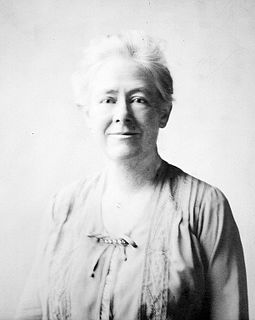
Mary Morris Vaux Walcott was an American artist and naturalist known for her watercolor paintings of wildflowers. She has been called the "Audubon of Botany."

The Tri-Cities of Virginia is an area in the Greater Richmond Region which includes the three independent cities of Petersburg, Colonial Heights, and Hopewell and portions of the adjoining counties of Chesterfield, Dinwiddie, and Prince George in south-central Virginia. Other unincorporated communities located in the Tri-Cities area include Ettrick, Fort Lee, and City Point, the latter formerly a historic incorporated town which was annexed to become part of the City of Hopewell.

The Western Pennsylvania Conservancy (WPC) is a private nonprofit conservation organization founded in 1932 and headquartered in Pittsburgh, Pennsylvania. WPC has contributed land to 12 state parks and conserved more than a quarter million acres of natural lands. The Conservancy plants and maintains more than 132 gardens in 20 Western Pennsylvania counties, as well as planting thousands of trees through its community forestry program. WPC has protected or restored more than 3,000 miles (4,800 km) of rivers and streams. In 1963, Edgar Kaufmann Jr. entrusted Frank Lloyd Wright's masterwork Fallingwater to the Conservancy. The house was called the most important building of the 20th century by the American Institute of Architects.

Millard Owen Sheets was an American artist, teacher, and architectural designer. He was one of the earliest of the California Scene Painting artists and helped define the art movement. Many of his large-scale building-mounted mosaics from the mid-20th century are still extant in Southern California. His paintings are in the Metropolitan Museum of Art and the Whitney Museum in New York, the Chicago Art Institute, the National Gallery in Washington D.C.; and the Los Angeles County Museum.

Erythronium propullans, the Minnesota dwarf trout lily, Minnesota adder's tongue or Minnesota fawnlily, is a rare plant endemic to the Cannon River and North Fork Zumbro River watersheds in Rice County, Goodhue County and the extreme northern edge of Steele County, Minnesota, in the United States. The plants are believed to be a mutation or sport of the white trout lily and evolved following the most recent ice age.
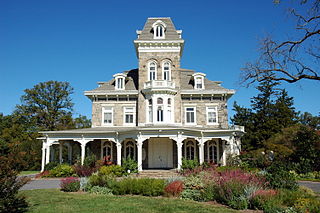
Cylburn Arboretum [pronounced sil·brn aar·br·ee·tm] is a city park with arboretum and gardens, located at 4915 Greenspring Avenue, Baltimore, Maryland. It is open daily – excluding Mondays – without charge.

The Norfolk Botanical Garden is a botanical garden with arboretum located at 6700 Azalea Garden Road, Norfolk, Virginia.
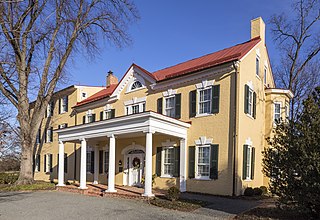
Dodona Manor, the former home of General George Catlett Marshall (1880–1959), is a National Historic Landmark and historic house museum at 312 East Market Street in Leesburg, Virginia. It is owned by the George C. Marshall International Center, which has restored the property to its Marshall-era appearance of the 1950s. It is nationally significant as the home of George C. Marshall, Chief of Staff of the United States Army during World War II, Secretary of State, President of the American Red Cross, and Secretary of Defense.

Conservatory Water is a pond located in a natural hollow within Central Park in Manhattan, New York City. It is located west of Fifth Avenue, centered opposite East 74th Street. The pond is surrounded by several landscaped hills, including Pilgrim Hill dotted by groves of Yoshino cherry trees and Pug Hill, resulting in a somewhat manicured park landscape, planned in deferential reference to the estate plantings of the owners of the mansions that once lined the adjacent stretch of Fifth Avenue.

Botanical illustration is the art of depicting the form, color, and details of plant species, frequently in watercolor paintings. They must be scientifically accurate but often also have an artistic component and may be printed with a botanical description in books, magazines, and other media or sold as a work of art. Often composed by a botanical illustrator in consultation with a scientific author, their creation requires an understanding of plant morphology and access to specimens and references.

Kew Gardens is a botanic garden in southwest London that houses the "largest and most diverse botanical and mycological collections in the world". Founded in 1840, from the exotic garden at Kew Park, its living collections include some of the 27,000 taxa curated by Royal Botanic Gardens, Kew, while the herbarium, one of the largest in the world, has over 8.5 million preserved plant and fungal specimens. The library contains more than 750,000 volumes, and the illustrations collection contains more than 175,000 prints and drawings of plants. It is one of London's top tourist attractions and is a World Heritage Site.

Lee Memorial Park is a historic park and national historic district located at Petersburg, Virginia. The district includes two contributing buildings, three contributing sites, and two contributing structures. They are the park superintendent's house, the bathhouse, Willcox Lake reservoir, the Civil War earthworks, the park's system of roadways, paths and trails, the park's general topography and the Lee Park Wild Flower and Bird Sanctuary created by the Works Progress Administration between 1935 and 1940. As part of the W.P.A. project, Petersburg artist Bessie Niemeyer Marshall painted 238 watercolors of Lee Park herbarium specimens.
James Marion Shull (1872–1948) was an American botanist known for his iris and daylily cultivars and botanical illustrations.

Deborah Griscom Passmore (1840–1911) was a botanical illustrator for the U.S. Department of Agriculture who specialized in paintings of fruit. Her work is now preserved in the USDA's Pomological Watercolor Collection, and she has been called the best of the early USDA artists. She rose to lead the USDA staff artists, and she became the most prolific of the group, contributing one-fifth of the 7500 paintings in the Pomological Watercolor Collection.

Inez Harrington Whitfield was an educator and botanical illustrator best known for her watercolor paintings of wildflowers native to Arkansas.
